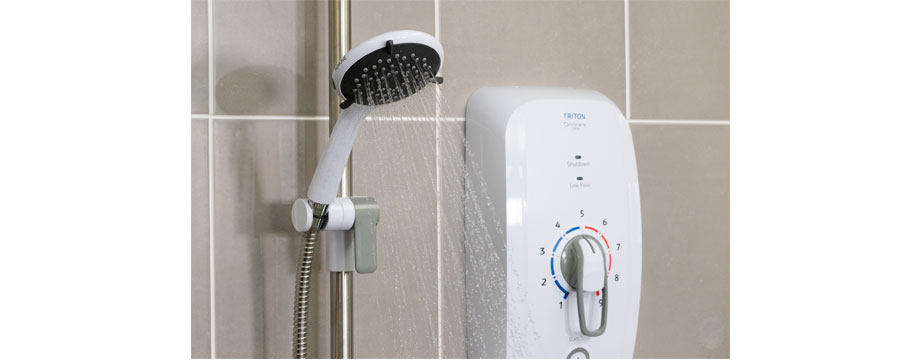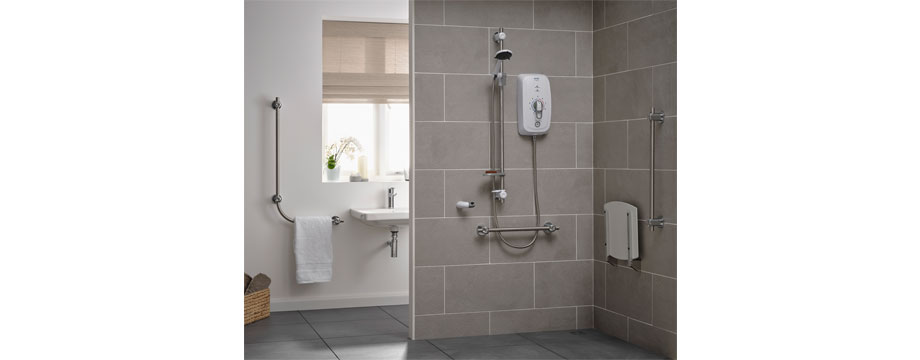In our last piece, we looked at how the rise in multi-generational living will impact bathroom specification. Here, Martyn Brown, Contracts and Technical Manager at Triton Showers, takes a look at the options available to those tasked with delivering inclusive showering.
Anyone who specifies for housing associations will know there are a range of factors that impact product choice. While tight budgets will always play a role (an issue we will touch on later in the piece), first and foremost homes need to be fit-for-purpose.
Given the increasing number of generations that are living under one roof (expected to account for 5.4 million households by 2040[1]), this is particularly pertinent. When it comes to bathroom design, inclusive showering is a critical component of social housing.

Key features
Below are some of the key factors in delivering suitable solutions:
• Layout – the shower cubicle or walk-in enclosure needs to be as spacious as the room will allow. As occupational therapists will know, being too cramped makes it difficult for an individual to get in and out, as do obstructions and hazards.
• Intuitive and ergonomic controls – complex controls can be confusing, so for multi-generational households, the best showers have the minimum number of variables. Figures from the Royal National Institute for the Blind (RNIB) also suggest that one in five people aged 75 and over are living with sight loss, so look out for showers that carry BEAB, BEAB Care and the RNIB Approvals.
• Remote stop/start button – this helps to ensure that the shower is already at the correct temperature when the user enters. It is also important in cases of emergency, allowing carers to stop the shower should a trip or slip have occurred.
• Grab bars and riser rails – these are safety features designed to help a person maintain balance, stand for longer without tiring, hold some of their weight while moving around, or have something to grasp in case of a slip or fall. Dual purpose riser bars, that also function as a grab rail, are also available with up to 150kg support load while showering.
• Shower seating – getting this right is particularly important for the most vulnerable users, enabling them to adopt a more comfortable position while showering, thus reducing fatigue levels. The seat should always be fitted at a 90-degree angle to the shower unit to allow it to be controlled with ease from a seated position.

Triton’s Omnicare range of thermostatic showers are designed to be suitable for all ages and mobility, offering peace of mind to housing providers and helping to ensure bathrooms are specified to the exact needs of the end user. The product has the added bonus of looking sleek, something that can sometimes be overlooked but plays a crucial role in making a house a home.
Ease of installation
As previously mentioned, financial constraints can make specifying for social housing even more challenging. For this reason, it’s vital that the chosen solution is as straightforward as possible to fit, minimising installation time.
Triton’s Omnicare Ultra and Ultra+ are examples of products that are equipped to meet the needs of multiple generations. Crucially, the range has been designed with a specific emphasis on ease of installation, including retrofit applications where a previous shower is being replaced.
With so many aspects of inclusive shower design to consider, Triton has created a guide that goes into detail on all of the above. A blueprint for bathroom safety: how to make bathrooms fit for purpose for all generations can be viewed here: https://www.tritonshowers.co.uk/a-blueprint-for-bathroom-safety
[1] https://www.tritonshowers.co.uk/a-blueprint-for-bathroom-safety
- Log in to post comments













